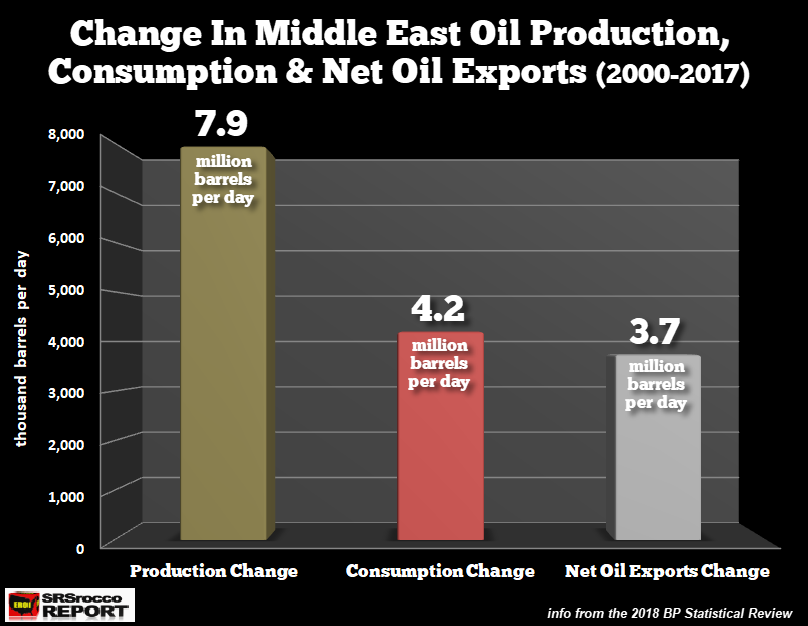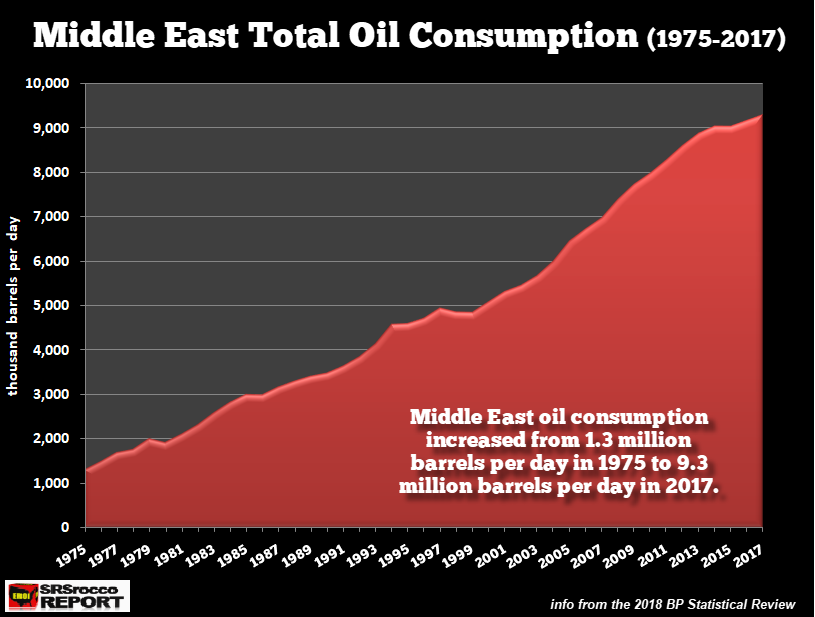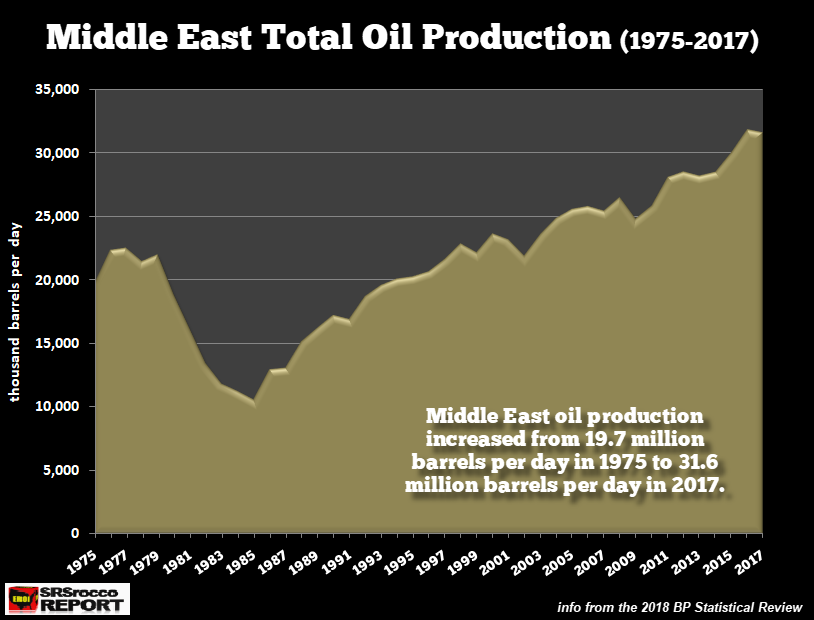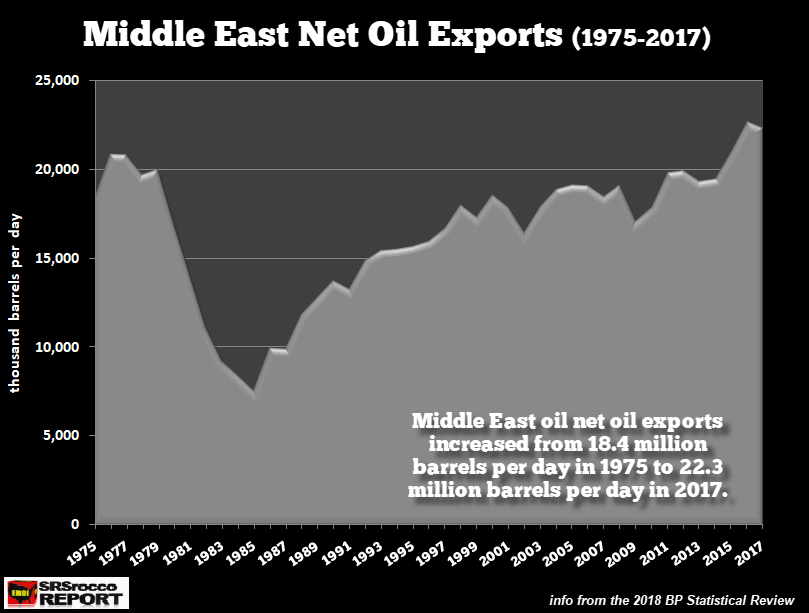The Middle East is heading for a crisis in its oil industry. Unfortunately, the market doesn’t realize there is any danger on the horizon because it mainly focuses on how much oil the Middle East is producing rather than its exports. You see, it doesn’t really matter how much oil a country produces but rather the amount of its net oil exports.
A perfect example of this is Mexico. As I mentioned in a recent article, Mexico is now a net importer of oil for the first time in more than 50 years. Furthermore, the IEA – International Energy Agency, published in their newest OMR Report that Mexico is forecasted to lose another 170,000 barrels per day of oil production in 2019. Thus, this is terrible news for the United States southern neighbor as it will have to import even more oil to satisfy its domestic consumption.
Now, when we think of the Middle East, we are mostly concerned with its oil production. However, the Middle Eastern countries, just like Mexico, have been increasing their domestic consumption, quite considerably, over the past 40+ years. How much… well, let’s take a look. Since 2000, total Middle East domestic oil consumption jumped from 5.1 million barrels per day (mbd) to 9.3 mbd in 2017:

As we can see, while Middle East oil production increased by 7.9 mbd from 2000 to 2017, domestic consumption expanded by 4.2 mbd. This means that more than 50% of the Middle East’s production growth during this period was absorbed by domestic use. The next chart shows how the changes in the regions oil production and consumption impacted net oil exports.

So, after the Middle East spent hundreds of billions on capital expenditures to increase its oil production by nearly 8 mbd, its citizens consumed more than half of that amount. Thus, the increase in Middle East net oil exports since 2000 was only 3.7 mbd.
Now, if we look over a more extended period, the results are even worse. According to the data in BP’s 2018 Statistical Review, Middle East oil consumption surged to 9.3 mbd in 2017 from 1.3 mbd in 1975:

While the region’s domestic oil consumption increased by 8 mbd (1975-2017), total production increased by nearly 12 mbd:

The significant decline in Middle East oil production during the early 1980s was due to the significant cut in supply stemming from the global recession. World oil demand fell considerably from 1980 to 1984 while more oil supply came online. If we subtract Middle East consumption from production this is the following result:

Since 1975, Middle East net oil exports have only increased by 4 mbd. The huge drop in the Middle East net oil exports during the early 1980s was temporary, but domestic consumption continued to grow and will become more of a factor in the region as oil production peaks and declines. If we go back and look at the Middle East oil consumption chart above, we will notice that domestic oil demand was not impacted by the global recession in 2008-2010. Interestingly, overall Middle East oil consumption increased by 1 mbd from 2007 to 2010.
So, the real danger for the Middle East will occur when oil production peaks and declines while domestic consumtion continues to increase. This will be a double-edged sword for the Middle Eastern Governments as they will be forced to cut public spending as oil revenues fall.
